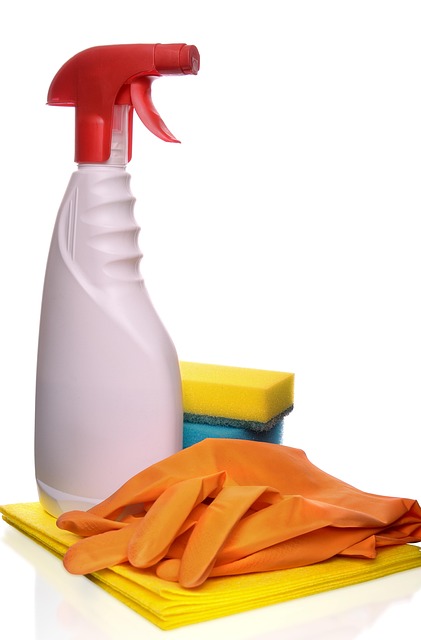Deep cleaning rugs is vital for maintaining their quality, aesthetics, and longevity. It involves tailored care based on material, age, and traffic. Preparation includes furniture removal, vacuuming, stain pre-treatment, and selecting appropriate cleaning solutions. The process begins with vacuuming, followed by application of deep cleaning solutions, extraction, rinse, and drying. Spot cleaning before and after deep cleaning prevents damage and maintains indoor air quality. Proper drying, regular rotation, and professional services every 3-6 months extend rug lifespan. Avoiding incorrect solutions, over-wetting, and mold growth is crucial for effective yet safe deep cleaning.
Deep cleaning rugs is essential to maintain their beauty and longevity. This comprehensive guide explores the art of thorough rug care, from understanding the need for deep cleaning to choosing the right solutions and mastering the step-by-step process. We delve into unique care requirements for various rug types, effective spot cleaning techniques, and post-cleaning maintenance. Learn how regular deep cleaning benefits your rugs and avoid common mistakes. Elevate your rug care routine with these expert insights.
Understanding the Need for Deep Cleaning

Rugs are an integral part of any home or space, adding comfort and style. However, they can also accumulate a significant amount of dirt, dust, allergens, and even stains over time. Regular cleaning may not be enough to remove deeply embedded debris and contaminants, which is where deep cleaning comes in as a necessary practice.
Deep cleaning involves a thorough and comprehensive approach to sanitizing and restoring your rugs to their original condition. It goes beyond surface-level cleanliness by addressing the root causes of rug degradation. By removing dirt from fibers, getting rid of odors, and killing bacteria, deep cleaning ensures a healthier environment and prolongs the life of your rugs. This process is particularly important for high-traffic areas or homes with pets, where regular wear and tear can lead to faster deterioration.
Types of Rugs and Their Unique Care Requirements

Rugs come in a wide variety of materials, construction methods, and designs, each with its own unique care requirements for effective deep cleaning. Natural fiber rugs, such as those made from wool or silk, require gentle handling due to their delicate nature. Over-vacuuming or aggressive cleaning can cause damage, so regular, thorough vacuuming is the best practice for these types. Synthetic rugs, often made from nylon or polypropylene, are more durable and can withstand more intense deep cleaning processes. These rugs may benefit from periodic shampooing to remove deeply ingrained dirt and stains.
Additionally, area rugs often have specific care needs based on their age, origin, and current condition. Antique or vintage rugs, for example, need to be handled with extreme care due to their historic value. Professional deep cleaning services specializing in these pieces use specialized techniques and materials to preserve their integrity. Newer rugs may require more frequent deep cleaning depending on their traffic and exposure to dirt, dust, and other contaminants. Regular monitoring and proper cleaning routines are essential to maintaining the beauty and longevity of all rug types.
Preparation for a Deep Cleaning Session

Before diving into the deep cleaning process, proper preparation is key to achieving optimal results and maintaining the rug’s integrity. Remove all furniture from the room to ensure easy access and allow the cleaner to reach every corner. Vacuum the rug thoroughly to eliminate dust, dirt, and loose debris, making sure to use a tool designed for deep penetration. This step is crucial as it prepares the fabric for cleaning, ensuring that the cleaner can effectively target stubborn stains and odors.
Additionally, treat any existing stains before beginning the deep cleaning session. Apply a suitable stain remover or a mixture of mild detergent and warm water directly onto the affected areas, gently rubbing it in to loosen the grime. Let the solution sit for a few minutes, then blot dry with a clean cloth or paper towel. This preparation ensures that the deep cleaning process focuses on sanitizing and revitalizing the rug rather than simply moving dirt around.
Choosing the Right Cleaning Solutions

When it comes to deep cleaning rugs, selecting the appropriate cleaning solutions is a key step. Different rug materials require specific treatments, so choosing products designed for your particular rug type is essential. For synthetic fibers, enzymatic cleaners are ideal as they break down dirt and stains effectively while being gentle on artificial fabrics. On the other hand, natural fiber rugs, such as wool or silk, demand more care; look for solutions with mild, pH-neutral formulas to prevent damage.
Proper cleaning solutions not only ensure effective stain removal but also prolong the rug’s life by avoiding harsh chemicals that can weaken fibers. Always read product labels and follow instructions carefully, especially regarding water temperature and drying times. Using the right cleaning solutions will result in a deeper clean, preserving your rugs’ beauty and quality for years to come.
The Deep Cleaning Process Step-by-Step

Deep Cleaning for Rugs: A Comprehensive Guide
The deep cleaning process involves several meticulous steps to ensure your rugs are thoroughly cleansed and revitalized. It begins with vacuuming, removing loose dirt and debris from the rug’s fibers. This initial step is crucial as it prepares the rug for the next phase, ensuring no foreign particles obstruct the cleaning solution’s effectiveness. Following vacuuming, a deep cleaning solution is applied, specifically tailored to the rug’s material. This solution penetrates the fibers, breaking down ingrained stains and odors.
The magic happens during the extraction process, where a powerful extractor machine is used to remove the cleaning solution and any residual dirt. This step requires careful monitoring to avoid over-extraction, which can damage the rug. Once extracted, the rug undergoes a final rinse using a clean solution to ensure no residue remains. Post-cleaning, the rug is left to dry completely before being returned to its original location, ready to add comfort and style back into your space.
Tips for Effective Spot Cleaning

When it comes to deep cleaning rugs, spot cleaning is a crucial step that often gets overlooked. Before tackling the entire rug with powerful cleaners, address any visible stains or dirt patches first. This targeted approach ensures efficient use of cleaning solutions and prevents unnecessary damage. Start by gently blotting the stain with a clean cloth or paper towel, absorbing as much of the liquid or solid material as possible without spreading it further.
For stubborn spots, pre-treat with a suitable cleaner designed for rug care. Apply the cleaner directly to the stain, following the product’s instructions for contact time and rinsing. Use a soft brush or sponge to gently work the cleaner into the fibers, then rinse thoroughly with warm water. Regular spot cleaning not only maintains the rug’s appearance but also prolongs its lifespan by preventing the buildup of dirt and debris that can lead to more severe damage over time, making it an essential part of any deep cleaning routine.
Drying and Maintaining Your Rug Post-Deep Cleaning

After a deep cleaning, allowing your rug to dry properly is crucial for maintaining its quality and extending its lifespan. It’s recommended to leave the rug unrolled and undisturbed in a well-ventilated area until it’s completely dry, which can take several days depending on the size and thickness. Direct sunlight and heat sources should be avoided during this period as they can cause discoloration or damage. Once dry, regularly vacuuming your rug will help remove any lingering dust and debris, ensuring its fibers stay in top condition.
Regular maintenance includes spot cleaning any new stains promptly using mild detergent and warm water. For a deeper clean every 3-6 months, consider rotating your rug to even out wear patterns and employ professional services specializing in deep cleaning. This proactive approach will safeguard your investment, preserving the vibrant colors and lush texture of your rug for years to come.
Common Mistakes to Avoid During Deep Cleaning

When deep cleaning rugs, several common mistakes can diminish the effectiveness of your efforts or even damage the rug. One of the most frequent errors is using incorrect cleaning solutions for different types of fabrics. Rugs vary in material—from wool to synthetic fibers—and each requires specific care. Using a solution unsuitable for the rug’s construction can lead to color fading, fiber damage, or even permanent stains.
Another mistake to avoid is over-wetting the rug during the deep cleaning process. While thorough cleaning necessitates some moisture, excessive water can weigh down the rug, cause mold growth, and prolong drying time, leading to musty odors. It’s crucial to balance cleanliness with caution, using just enough solution to loosen dirt without saturating the fibers.
Benefits of Regular Deep Cleaning

Regular deep cleaning of rugs offers numerous benefits that extend far beyond aesthetic appeal. By eliminating embedded dirt, dust mites, and allergens, it significantly improves indoor air quality, making your living space healthier for everyone, especially those suffering from allergies or asthma. Deep cleaning also helps to restore the vibrant colors and textures of your rugs, prolonging their lifespan and maintaining their initial beauty.
Moreover, deep cleaning can prevent the buildup of stains and odors that may become permanent if left untreated. It treats hard-to-reach areas and corners, ensuring no hidden nasties remain. This meticulous process not only enhances the overall look and feel of your carpets but also ensures they remain a significant investment in your home’s comfort and style for years to come.
